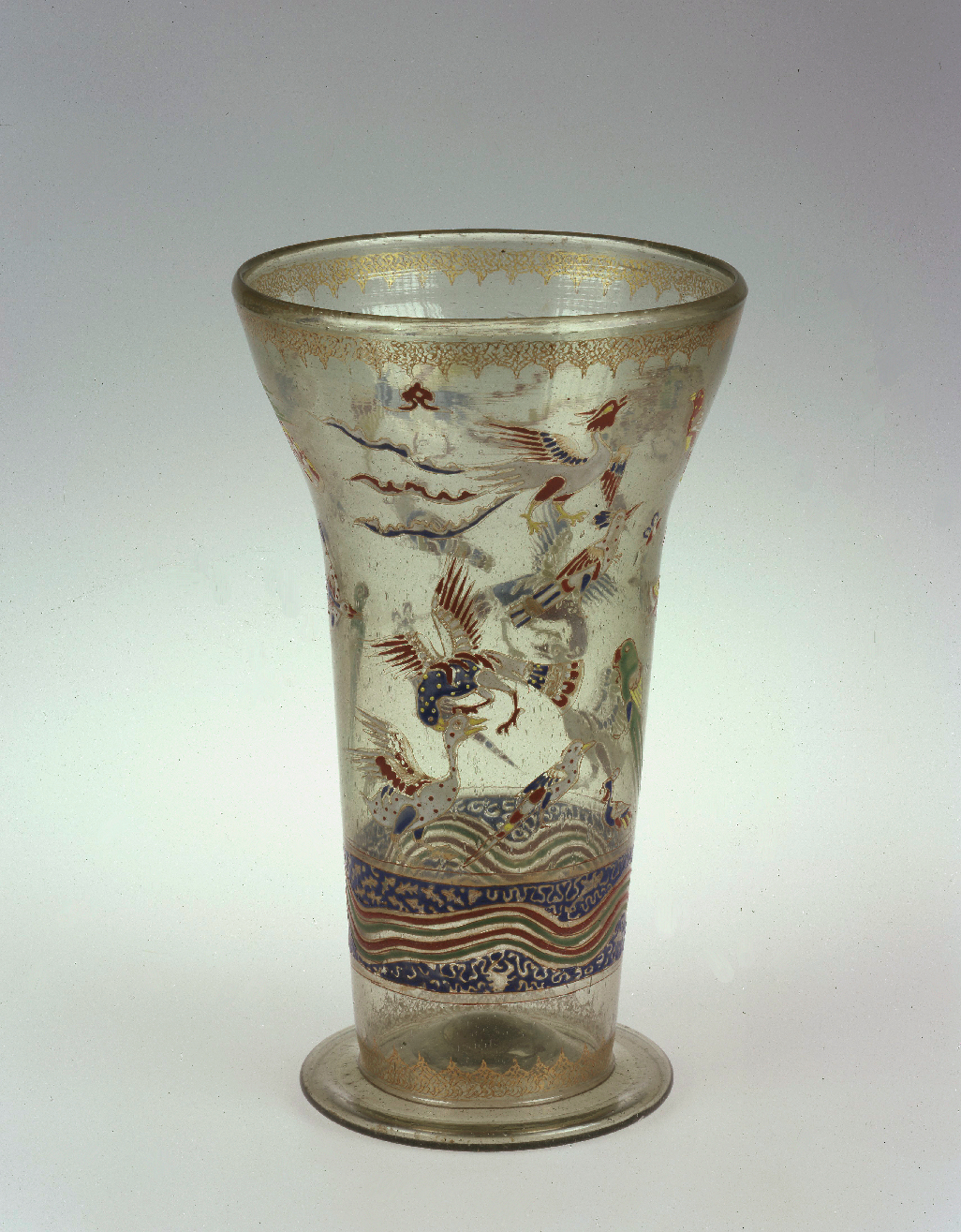
- Egypt or Syria, Mamluk period, first half of the 14th century
- Enamelled and gilded glass
- Inv. 2378
Beaker
In terms of shape, this is the largest known cylindrical piece with a flaring top made in enamelled and gilded glass from the Mamluk era (1250–1517). Its size suggests it was either used for ceremonial purposes or was a valuable gift, while the unusual decoration depicts mythical and real birds.
The upper part shows a phoenix with coloured plumage and a vulture, both flying above a hoopoe, a bird that is traditionally associated to royalty in the Middle East, as well as a pair of geese, a parrot and a hawk attacking a duck. The lower part has images of a magpie and a ground fowl. This group of birds is depicted all around the vase in a completely free style, the different positioning clearly suggesting a hierarchy that is dominated by the phoenix.
The enamelled and gilded glass technique that made Syrian craftsmen famous is considered to be one of Islam’s main contributions to the art of glass.
Georges Eumorfopoulos collection (bought in China, c. 1918). Acquired by Calouste Gulbenkian, through M. Giraud-Badin Sotheby’s, London, 5–6 June 1940.
H. 33.5 cm; Diam. base 15 cm
Washington D. C. 1975
Esin Atil, Art of the Arab World, exhibition catalogue. Washington, D. C.: Smithsonian Institution, 1975, p. 122.
Pinder-Wilson 1976
Ralph Pinder-Wilson, 'Elegance and Ornament in Islamic Glass', Apollo, vol. CIII, no. 170, 1976, p. 215.
London 1976
The Arts of Islam, exhibition catalogue. London: The Arts Council of Great Britain (Hayward Gallery), 1976, p. 145, no. 142.
Goffen 1995
Rona Goffen (ed.), Museums Discovered. The Calouste Gulbenkian Museum. Fort Lauderdale, Florida: Woodbine Books, 1995, pp. 180–1.
Ribeiro e Hallett 1999
Maria Queiroz Ribeiro and Jessica Hallett, Os Vidros da Dinastia Mameluca no Museu Calouste Gulbenkian / Mamluk Glass in the Calouste Gulbenkian Museum. Lisbon, Calouste Gulbenkian Museum, 1999, pp. 60–70, 106–7, no. 1.
Lisbon 2001
Calouste Gulbenkian Museum. Lisbon, Calouste Gulbenkian Museum, 2001, p. 35, cat. 18.